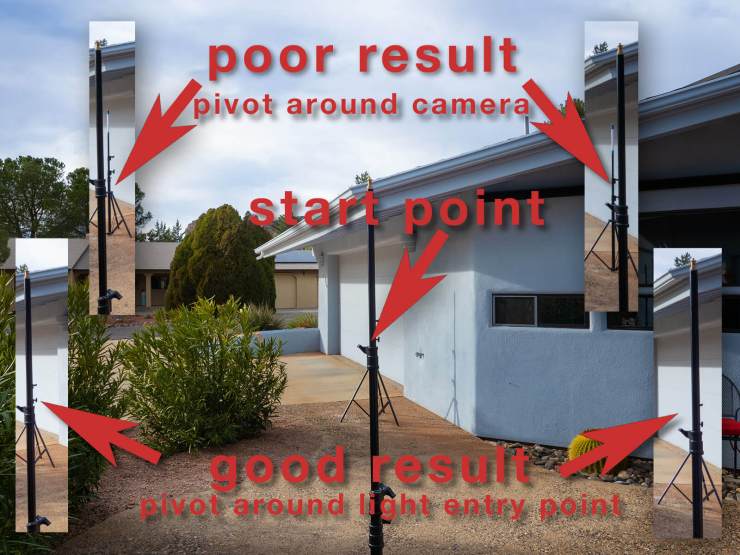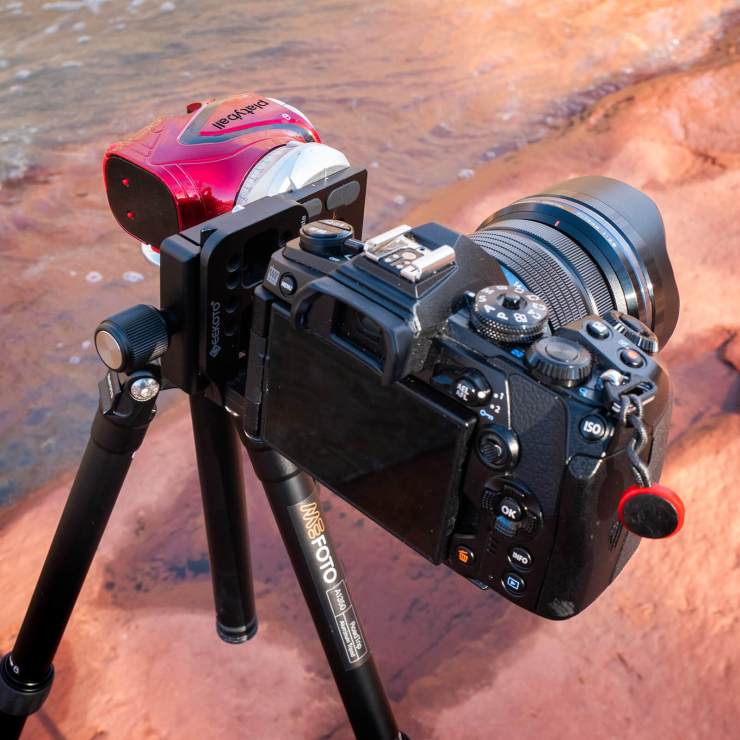There are a few things to consider when capturing panoramas and vertoramas. Getting the camera lens in the proper position is key. In a previous article, I showed how you can put together the gear needed to do this on a budget. Here’s how to find the light entry pivot point. BTW, the image illustrating this article is a very small part of a 21,000 pixel tall image.
Light entry point
Light entry point or entrance pupil, and where it is in relation to where the camera pivots, is the key to better panorama and vertorama stitching. I showed you the budget kit needed to make this work. Now let’s talk about how to properly use it. Here’s a link to the set up.
Finding the light entry point
Here is a way to find the light entry point. Make it so your camera can move forward and backward on your tripod. In order to really understand the changes happening due to the lens position, I recommend you perform these tests for yourself.

- Set up a couple of light stands. One should be about six feet in front of your camera, the other at least 15-20 feet away. If you have a small space, you can use the corner of the room for your second vertical, or move outside like I did so you couldn’t see my messy studio. In order to better see the results, I wrapped and taped a piece of paper on the further light stand.
- Place the camera over the tripod pivot point, where it would normally sit without the longer plate. Line up the two verticals in the center of your frame. Make an image. Pivot the camera so the foreground light stand is on the right side of the frame. Grab a frame. Move the camera to the left side of the frame. Repeat photographing on each side.
- Next, slide the camera backward so the front of the lens is over the pivot point. Make the same exposures. Note the difference. You may have to repeat several times until you get it just so.
- Repeat the process until the further light stand or vertical reference is always covered by the front light stand when moving the frame from the left or right side.
If you have a zoom lens, you will want to perform this at different focal lengths. Same if you have multiple lenses. You can mark the light entry point on your Arca Swiss slider so you don’t have to keep repeating these tests.
My kit for this photo
Here is a BTS photo of the kit on location in beautiful Sedona, Arizona on Oak Creek. You can see the breakout of this gear used for capturing my vertorama in the previous article.

Questions?
If you have any questions, pop them down in the comment section below. Or, send me an email ([email protected]).
Yours in Creative Photography, Bob
Tell your story with the second annual Visual Storytelling Conference!
Experience four days of interactive, online training sessions featuring a range of educational content with experienced photographers and content creators. This free event kicks off with a series of technical boot camps to build essential skills, followed by live, online sessions on photography, video, business and social media. Join live from March 10-13, 2022!
